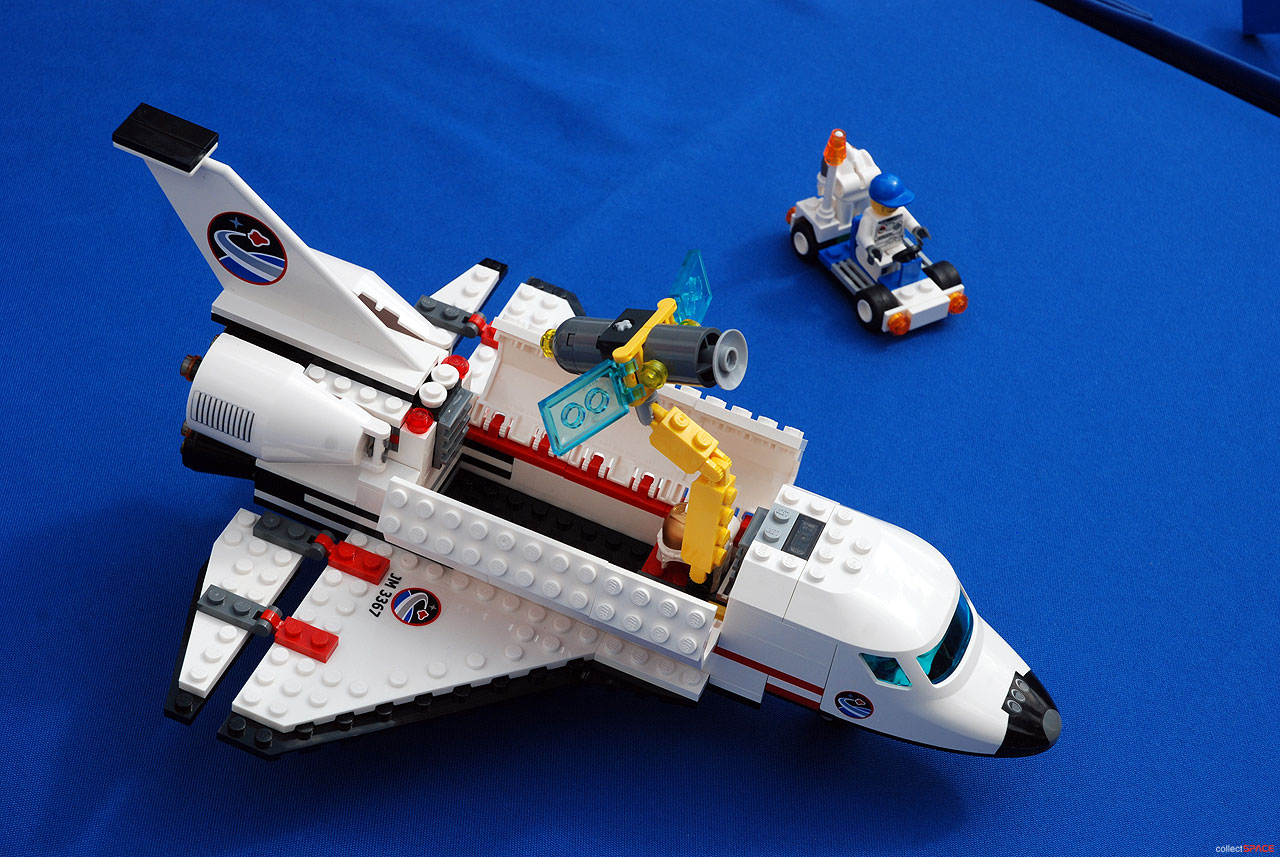

In 1987, Lego added "factions" to its space theme with the introduction of Blacktron and the new subtheme based on space exploration was given the name "Futuron". In 1983, the helmet with thicker chinstraps appeared, although they were still susceptible to breakage. The first helmets had thin chinstraps that would break with normal use. Two new colors of spacemen were introduced in blue and black uniforms. By the mid-1980s, the color palette had shifted to predominantly white with a transparent blue theme, later used extensively in the Futuron theme. The first minifigures released in this theme in 1978 wore either a red or white spacesuit, with yellow spacemen debuting a year later. With the limited parts selection at the time, sets were still fairly simplistic with designs including: minifigure pilots steering their spacecraft with steering wheels, rocket engines as simple transparent cones affixed to fence pieces, visor-less helmets, and often no in-flight pilot protection other than a spacesuit. But as science-fiction designs grew, the basic pattern of ground-buggies, walking robots, spaceships, and bases developed. In its earliest stages, Space sets consisted only of ships and basic wheeled vehicles.

Designs began using more stacked plates instead of stacked bricks in order to make sleeker spaceship profiles. Much of the early Space sets consisted of blue, grey, white, and transparent yellow for the ships, and gray and transparent green for ground craft. The first Lego Space sets began an era of more complicated and less colorful designs with a heavy emphasis on space exploration. Once Lego began making individual themes in the 1970s, many new parts were created and older parts began appearing in new colors. The early Space sets were limited by color selection and more specialized pieces had not yet been developed with most Lego sets of this era were composed of colorful stacked bricks. History Early Space (1964–1973) Īt least three Lego sets were released prior to the so-called "Classic" Space theme, predating the standard Lego minifigure. 3.1 Classic Space references in other sets.If you're a big space program fan, it's worth it. So, if you see it for sale for a not ridiculous price, we can’t recommend it enough. Moon landing buffs should take note of the number of pieces it’s made from, even – that’s the care and love that was clearly poured into this set.
#Lego space shuttle full#
Normally, we wouldn’t recommend things that aren’t actually available anymore, but this is easily the best space set Lego has ever made, and you can find it for sale online since it's only a recent retirement, so we kind of have to mention it.Ī full metre long when complete, this scale model of the Saturn V is utterly awesome, and meticulously detailed – from its recreation of every portion of the multi-stage rocket, to the little dioramas of the lunar module on the moon and the command module in the sea after a touchdown… and all with microscale figures, as a reminder that this is all to scale! It has been retired – possibly forever, possibly not, but definitely don’t expect it back soon. Here’s the thing: this Lego Ideas NASA Apollo Saturn V (opens in new tab) is no longer made by Lego.


 0 kommentar(er)
0 kommentar(er)
